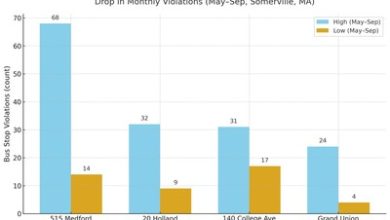Oncology dealmaking has roared back, with big pharma spending billions to acquire therapies that can hit multiple hard-to-treat tumor types, introduce novel mechanisms, and scale quickly once early signals are validated. These headline acquisitions aren’t just market-movin – they’re a clear signal of what buyers value right now.
And that backdrop makes Silexion Therapeutics (NASDAQ: SLXN) particularly interesting. Despite a market cap of only ~$7 million, the company is advancing a tumor-targeting approach aimed directly at KRAS-driven cancers – one of the most consequential and difficult pathways in oncology, underpinning pancreatic, colorectal, lung, and even some gastric tumors. With the first KRAS therapies from other players already surpassing $1 billion in annual sales, the question is whether the market has fully recognized the potential of what Silexion may be developing.
Why Silexion’s Preclinical Data Stands Out
Across multiple tumor models, Silexion’s therapeutic candidate has shown the ability to interfere with KRAS-related signaling and slow tumor growth. In orthotopic pancreatic models, preclinical data also indicate reductions in metastatic burden – an outcome that remains extremely difficult to achieve. Data to date span pancreatic, lung and colorectal models, with human gastric cancer cell-line data suggesting potential expansion into a fourth tumor type. Taken together, the results point to a biological mechanism with potentially broad reach – exactly the kind of platform-like relevance recent acquirers have been paying a premium for.
Preclinical studies also indicate flexibility in how the therapy may be delivered. In pancreatic tumors, it can be placed directly into the tumor environment using an extended-release intratumoral formulation. In separate experiments, it has been administered subcutaneously, allowing systemic exposure and the ability to reach primary and metastatic lesions. If such dual-route optionality translates into the clinic, it could support a development strategy that spans both localized and advanced disease settings – the kind of versatility major oncology players have been seeking.
The M&A Wave: What Big Pharma Is Signaling
This is where the broader industry trend becomes relevant. In recent months, Johnson & Johnson agreed to acquire Halda Therapeutics in a deal valued at more than $3 billion. Bayer entered a KRAS-focused oncology collaboration worth up to $1.3 billion. Roche moved to acquire Poseida for a transaction with a total potential value of roughly $1.5 billion. GSK purchased IDRx in a deal topping $1 billion in potential consideration. These companies operate independently, but the logic behind their moves is consistent: each sought programs with novel mechanisms, multi-tumor relevance, and the potential to anchor broader pipelines – even when much of the value lay in what the platforms could become.
Viewed through that lens, Silexion starts to look less like an obscure microcap and more like a company working in the direction that the largest oncology buyers are already validating with their checkbooks.
A Microcap Preparing for a Major Clinical Step
The company is now preparing for its next major step: a human study in pancreatic cancer. Silexion has stated that it plans to advance its KRAS-targeting candidate into a Phase 2/3 trial in locally advanced pancreatic cancer following completion of toxicology work. This is an unforgiving disease where survival gains have been modest despite decades of research and where mortality remains among the highest in oncology. Even modest improvements in delaying progression or reducing the spread of disease could carry enormous clinical value. While detailed endpoints have not yet been disclosed, such a trial would typically evaluate survival, tumor behavior and measures related to quality of life and metastatic risk.
Silexion is still in the early innings, and the road ahead remains challenging. Yet the alignment between what big pharma is acquiring and what Silexion’s approach represents is increasingly hard to ignore. A KRAS-targeting therapy showing preclinical signs of multi-tumor applicability, capable of both localized and systemic delivery in models, and preparing for clinical advancement – all while trading at a market cap in the single-digit millions – naturally raises the question of whether the market has fully appreciated the asset it is valuing.
As the oncology deal boom accelerates, Silexion is emerging as a compelling under-the-radar story – not because deal activity automatically lifts all boats, but because it clarifies what high-value innovation looks like right now. And on that score, Silexion appears far more aligned with current demand than its microcap status suggests.
Recent news highlights from Silexion
Silexion Therapeutics Reports Third Quarter 2025 Financial Results and Provides Business Update
Silexion Therapeutics Regains Compliance with Nasdaq Listing Requirements
Disclaimer & Disclosure: This content is a form of paid promotional content and advertising. Wall Street Wire receives cash compensation from Silexion Therapeutics Corp for promotional media services provided on an ongoing subscription basis. This content is for informational purposes only and does not constitute financial advice. Wall Street Wire is not a broker-dealer or investment adviser. Full compensation details and information regarding the operator of Wall Street Wire alongside the full disclaimers and disclosures this content is subject to are available wallstwire.ai/disclosures. We are not responsible for estimates or any market size figures that may be cited in this article nor do we endorse them, they are quoted based on publicly available news reports and additional price targets or figures may exist that may not have been quoted. Readers are advised to refer to the full reports mentioned on various systems and the disclaimers/disclosures they may be subject to. This article was not reviewed or approved by the issuer prior to publication and should not be considered an official communication by it.



